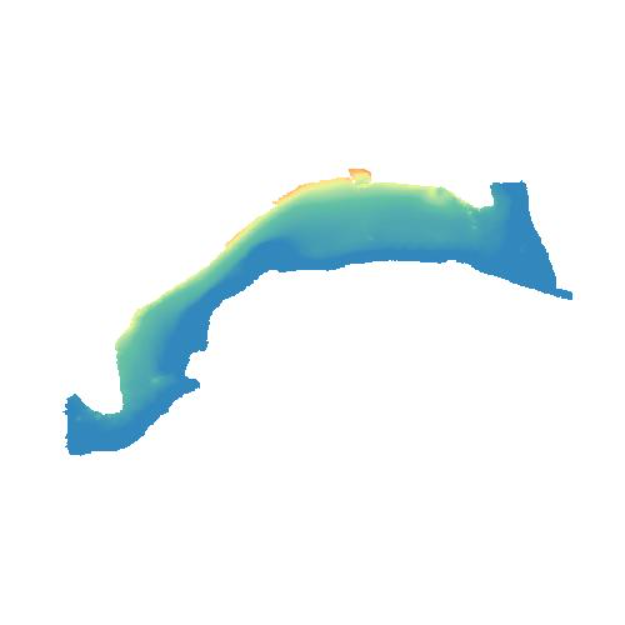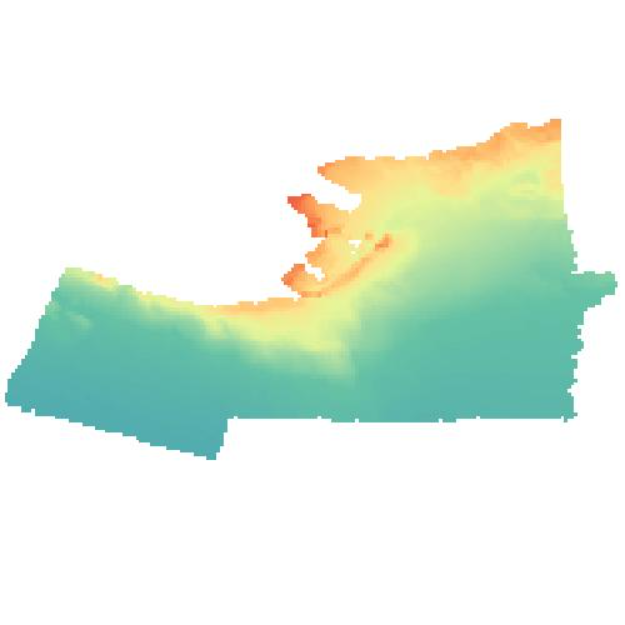Resolution
25 m
44 record(s)
Type of resources
Available actions
INSPIRE themes
Provided by
Years
Formats
Representation types
Update frequencies
Resolution
geoDescCode
cartografia
geographicCoverage
geographicCoverageDesc
hvd
referenceDateRange
denominatorRange
resolutionRange
dataPolicy
openServiceType
dataType
dataFormat
-
This product was developed by LNEG with a view to the future identification of “Renewable Acceleration Areas” for the deployment of renewable electricity production plants in Mainland Portugal. The work took place within the scope of an informal Working Group, coordinated by LNEG and involving: the Portuguese Environment Agency (APA), the General Directorate of Energy and Geology (DGEG), the General Directorate of Territory (DGT), the Institute of Conservation of Nature and Forests (ICNF) and the General Directorate of Cultural Heritage (DGPC). The map identifies the areas in m2 of mainland Portugal with the least sensitivity (environmental, cultural heritage and other) which as such may be considered in the definition of future renewable "Acceleration Areas" within the framework of the revised RED Directive (Renewable Energy Directive. As these areas are not covered by exclusion conditions regarding the preservation of environmental and heritage values (among other), a simplified permitting process for renewable power production plants (solar photovoltaic and wind) could be established, thus allowing to accelerate its implementation without compromising other environmental and territorial values. The mapped areas are preferred areas from the point of view of simplifying the permitting process, but they are not exclusive. In other words, renewable power plants can be implemented in other locations following the normal permitting process. It should be noted that the presented results reflect the situation as of June 2023, and much of the information used is dynamic in nature, meaning this product must be periodically updated. This document is complemented with several electronic Geographic Information System (GIS) files containing the supporting data produced/compiled and collected. Last but not least, this first mapping focuses exclusively on non-artificialized areas. Although the implementation of renewables in a distributed manner in a built/artificialized environment is essential for the country, the analysis of this scope is carried out in another work.
-
This work was carried out by the GTAER - Working Group for the Definition of Renewable Energy Acceleration Areas, created by Order no. 11912/2023 of 23 November, and is intended to consolidate and strengthen the previous work carried out to identify the areas with the least sensitivity for the location of renewable electricity production units (solar photovoltaic and wind). The work presented here assessed the potential for implementing these units in natural areas or territories. The process of identifying PRAAs, took into account 5 different scenarios, depending on whether or not the following constraints were excluded: (i) areas relating to aquifers classified as porous or essentially porous, belonging to the western edge and the Tejo-Sado basin; (ii) areas relating to the distance between residential and mixed-use built-up areas and (iii) available RAN (National Agricultural Reserve) and REN (National Ecological Reserve) areas. The areas presented contribute to the definition of future preferential RAAs areas - they do not constitute the formal definition of the RAAs. In future RAAs, the licensing process will be simplified. It should be noted that these areas are not exclusive, and renewable energy units can be implemented in the rest of the territory in accordance with the normal licensing process. The results presented reflect the situation as of February/March 2024.
-
O mapa de declives utiliza um gradiente de cores em que as cores mais claras representam declives mais suaves e a cores mais escuras declives mais acentuados. Os declives estão representados em graus e foram obtidos com base no EU-DEM V1.1 (produto Copernicus Land).
-
O mapa de exposição de vertentes representa a direção da exposição de determinada vertente, tendo sido construído com base no EU-DEM V1.1 (produto Copernicus Land).
-
The “National Atlas of Sustainable Green H2” is a tool based on georeferenced information that follows defined criteria in the development of scenarios to assess the suitability of the location of green hydrogen production projects with regard to: (i) necessary resources to power hydrogen production plants through water electrolysis; (ii) land use conditions for the implementation of green hydrogen production units, and (iii) factors that enhance the commercialization of the produced hydrogen. Based on this “National Atlas of Sustainable Green H2” tool, we present 4 maps referring to 4 scenarios that identify the “best” areas for green hydrogen production according to the basic rationale of each scenario. The 4 maps represent the following scenarios: scenario A “Diversified”, scenario B “Drought, Gas Grid and Transport”; scenario C “Drought and gas consumers”; scenario D “Prospective”. Each scenario was developed based on 3 sub-indices (i) proximity to water sources, (ii) proximity to energy sources and (iii) ease of commercializing green H2 on the market. The water sub-index consists of a maximum of 7 indicators considering the proximity to the following potential water sources: surface water bodies, wastewater treatment plants (WWTPs), public water network, groundwater, seawater, multi-purpose irrigation grid, water scarcity index. The energy sub-index consists of a maximum of 6 indicators, namely: solar resource, onshore wind resource, offshore wind resource, proximity to bioelectricity producers, proximity to hydropower producers, proximity to the power grid. Finally, the market sub-index is made up of a maximum of 5 indicators, including proximity to: potential industry consumers of H2, potential transport consumers of H2, potential consumers of H2 as raw material, large CO2 emitters. Each final map excludes from potential project locations land occupation that proves to be inappropriate. The following are not yet considered: easements and public utility restrictions, RAN and REN areas, Territorial Planning Plans, municipality land planning (PDM), SEVESO Directive hazardous zones, protected areas under the Water Framework Directive , seismicity, flood risk and/or geologically unstable areas (erosion, landslides, etc.). This Atlas requires a detailed analysis of sites considering all applicable legislation. The geographic information used has inherent limitations regarding date, scale, resolution and sources. Furthermore, the viability assessment for a specific project requires detailed information that goes beyond the variables contained in this Atlas and considers other decision-making and legal compliance factors, which cannot be considered at this scale.
-

Modelo batimétrico construído com base na informação de sondagem do Instituto Hidrográfico (IH). Ano(s): 2008. Este conjunto de dados integra os Conjuntos de Dados de Elevado Valor/HVD identificados de acordo com o Regulamento de Execução n.º 2023/138 da Diretiva (UE) 2019/1024, relativa aos dados abertos e à reutilização de informações do setor público.
-
Modelo Digital do Terreno (MDT) de Portugal Continental com espaçamento de 25 m, construído a partir da Altimetria em formato vetorial à escala 1:50 000.
-

Modelo batimétrico construído com base na informação de sondagem do Instituto Hidrográfico (IH). Ano(s): 2005-2008. Este conjunto de dados integra os Conjuntos de Dados de Elevado Valor/HVD identificados de acordo com o Regulamento de Execução n.º 2023/138 da Diretiva (UE) 2019/1024, relativa aos dados abertos e à reutilização de informações do setor público.
-

Modelo batimétrico construído com base na informação de sondagem do Instituto Hidrográfico (IH). Ano(s): 2015 Este conjunto de dados integra os Conjuntos de Dados de Elevado Valor/HVD identificados de acordo com o Regulamento de Execução n.º 2023/138 da Diretiva (UE) 2019/1024, relativa aos dados abertos e à reutilização de informações do setor público
-

Modelo batimétrico construído com base na informação de sondagem do Instituto Hidrográfico (IH). Ano(s): 2009. Este conjunto de dados integra os Conjuntos de Dados de Elevado Valor/HVD identificados de acordo com o Regulamento de Execução n.º 2023/138 da Diretiva (UE) 2019/1024, relativa aos dados abertos e à reutilização de informações do setor público
